Copyright 2020 - 2021 irantour.tours all right reserved
Designed by Behsazanhost
One day free tour at Imam Khomeini square and around
One day free tour at Imam Khomeini square and around
This square is one of the most magnificent structures that has made during the Qajar era. This square is a combination of Iranian, and European design and an imitation of the unique design of Naghsh-e Jahan Square in Isfahan which opened to the public in 1873. As the square was in the vicinity of the Golestan Royal Palaces as well as the royal gardens, various buildings, and monuments were quickly built around the square.
Some of these structures are:
- The Imperial Bank of Persia was founded in 1887.
- Telegraph building.
- Municipality Palace of Tehran in the 1950s.
- The Meydan-e Mashq (Parade Square) now is called National Garden Gate.
- Hassan Abad Square or known as the six domes.
- A number of luxury residences owned by ministers
But the most important buildings in and around the square are:
-Gate to the National Garden
-Post and Communications Museum (formerly the Post Office)
-National Museum
-The Islamic museum
-Museum of Ancient Iran
-Building No. 9 of the Ministry of Foreign Affairs (formerly Tehran Town Hall)
-Ebrat Museum (former SAVAK prison)
-Sepah Bank Coin Museum
-University of Art (formerly Cossacks Quarters)
-Ministry of Foreign Affairs
-Building No. 3 of the Ministry of Foreign Affairs (former HQ of the Anglo-Persian Oil Company)
-Officers Club (Building No. 7 of the State Department)
-National Library and Malek Museum
-Iran Science and Technology Museum
-Building No. 2 of the Organization for the Registration of Documents and Real Estate of Iran
All the above historical sites are located less than 1700 meters from Imam Square.
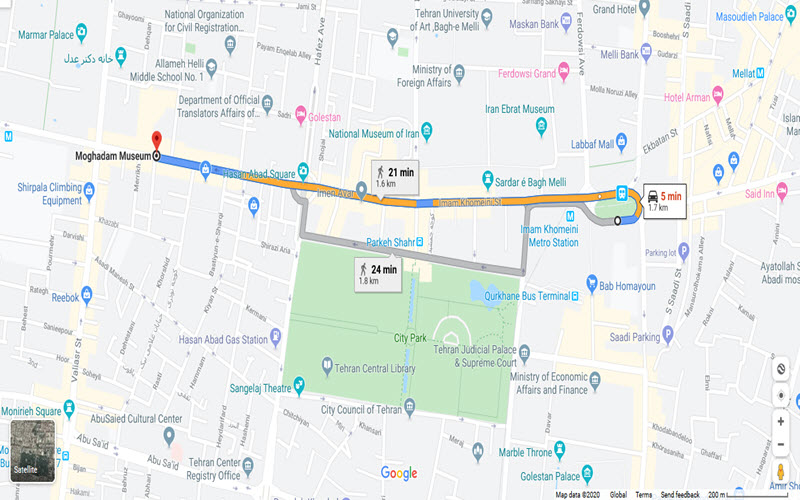 |
 |
This historical square has experienced various historical events such as uprisings - revolutions- coronations and other important events, that all are parts of the recorded history of this field. This landmark and the surrounding monuments will give you a free one-day tour. Join us to get acquainted with these monuments:
 |
-The Imperial Bank of Persia
In the east corner of Imam Khomeini square, an old building with an Iranian and classic design still hosts its clients. The Imperial Bank of Persia was founded in 1887 by serial entrepreneur Paul Reuter. The Imperial Bank of Persia was a British bank and the first modern bank in Iran that operated as the state bank and bank of issue in Iran (formerly known as Persia until 1935) between 1889 and 1929. It was established in 1885 with a concession from the Persian government to Baron Julius De Reuter (born Israel Beer Josaphat) a German–Jewish banker and businessman who later became a Christian and a British subject.
 |
-Bab Homayoon Street
After the opening of Imam Khomeini Square, various streets were built around it. One of the first major streets around it was Bab Homayoun Street, which had been connected to the Golestan Palace complex directly. It was founded by the order of Nasser al-Din Shah, the most famous King of the Qajar Empire, this street was set up with various shops to expand economic activity. Today, this street is one of the most important centers in providing the latest and most beautiful men's clothing. You can also spend a night on the street and enjoy street food.
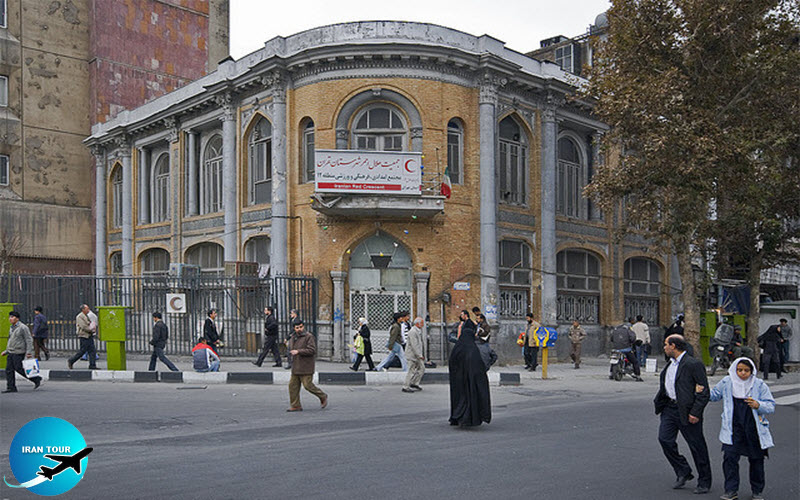 |
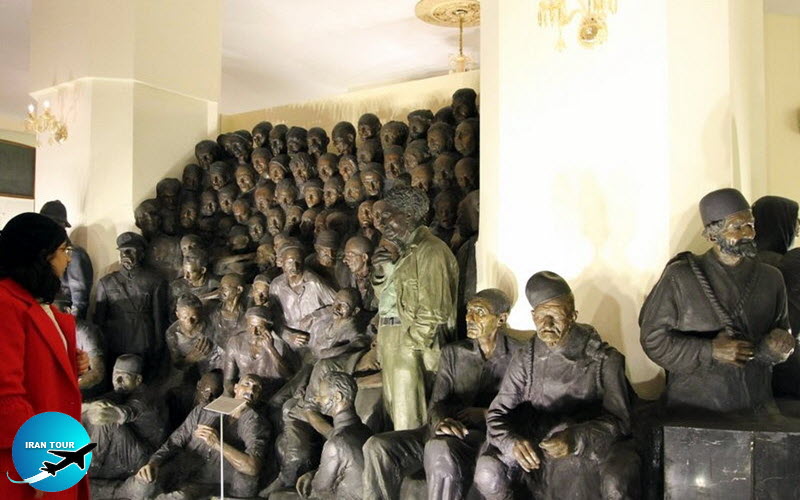 |
-Sanati Museum
This free museum was built in 1946 and currently belongs to the Red Crescent Society. The Sanati Museum included about 6,000 paintings and over a thousand gypsum, stone, and bronze statues of famous scientific and literary figures from Iran and even different types of people from different cultures and at different costs.
Many of these works of art are on display at the 13th Aban Museum. This museum is located southwest of Imam Khomeini square and is a site worth visiting.
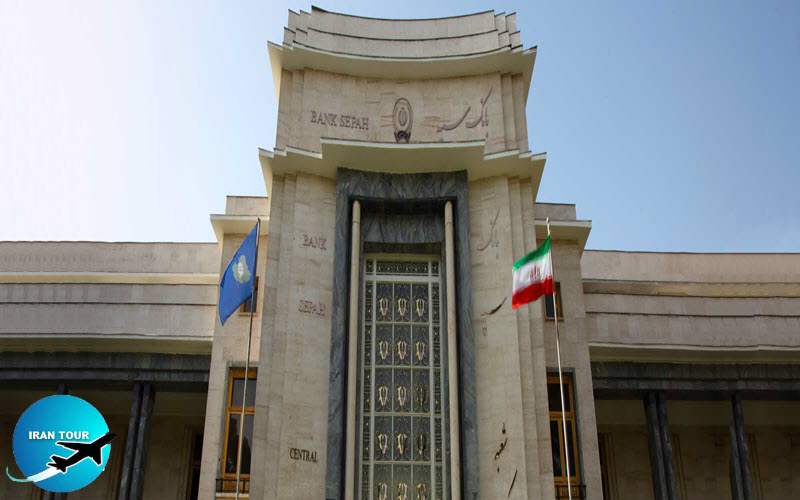 |
-Sepah Bank Museum
Sepah Bank Coin Museum is a free museum that opened in 1963 on the west side of Imām Khomeini Square, while you are walking toward National Garden Gate or just in front of Imam Khomeini Subway station you will face a set of buildings belonging to the central office of the first Iranian bank by the name Sepah Bank. This Museum is one of the most complete and most valuable coin museums in the Middle East.
The showcases of the museum are equipped with magnifying glasses for coins, allowing you to have a detailed view of your favorite coins. The collection presents coins from various ages in history, from the Achaemenid, Seleucid, Parthian, and Sassanid dynasties to most governments formed after the Islamic period. The collection also includes coins from various geographic regions such as Lydia, Greece, and regions under the Byzantine Empire, etc. Therefore, these collections not only reveal the cultural, social, and economic developments of Iran over several centuries but also reflect its foreign economic relations.
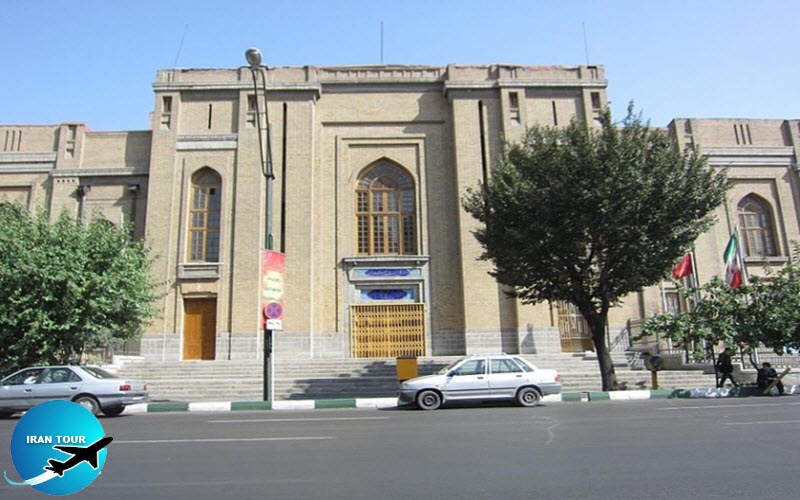 |
-Post and telecommunications museum
If you are passionate about communication, in the vicinity of National Garden Gate a bunch of old communication tools - news and messages in an old building are waiting for you. This free museum is one of the oldest and most beautiful government buildings, consisting of two levels comprising various lounges and rooms, and it is a suitable place for those who are interested in visiting historical and ancient relics. It should be noted that the designer and starter of this building was Markov and that it was completed by Engr. This building was transformed into the Ministry of Posts and Telegraphs and Telephones on March 10, 1996, then transformed into the Museum of Posts and Telecommunications on August 3, 1999.
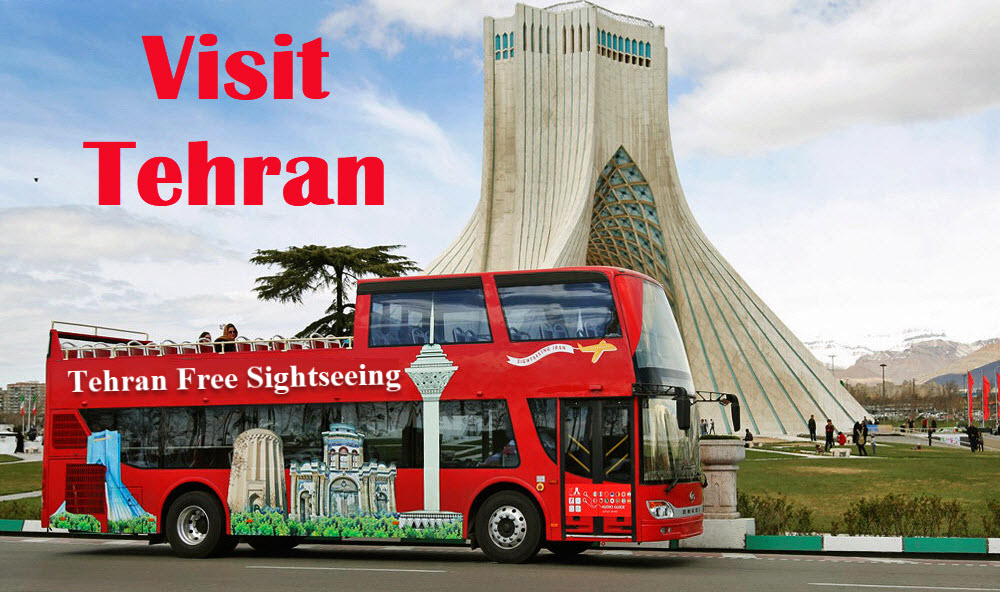 |
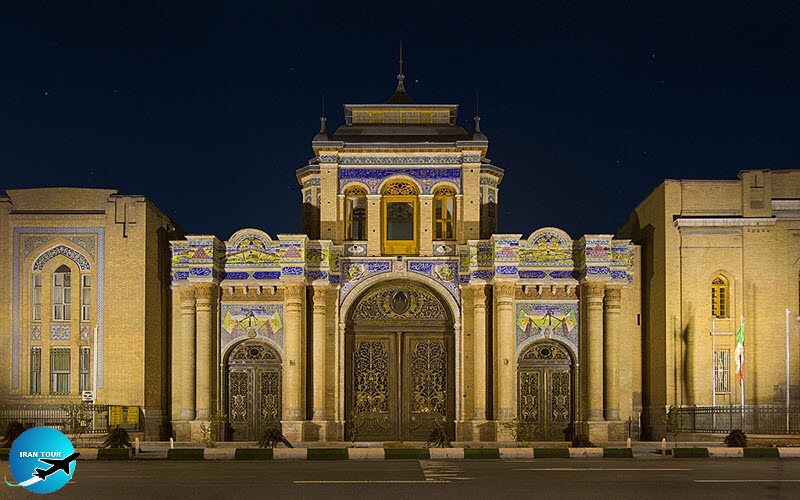 |
-National Garden (Baq-e-Melli) Gateway
The National Garden Gate is the only monument that has remained from a military complex founded in the Qajar period. The collection includes various military units that have been used for military exercises such as soldiers' parades - shooting exercises and other training operations. These buildings were renovated during the Qajar period and Pahlavi to new buildings such as the Ministry of Foreign Affairs - Museum - Officers Club - Other sections of the government. When you are walking in this area, the architecture of the buildings declares the history of Iran from 100 years ago.
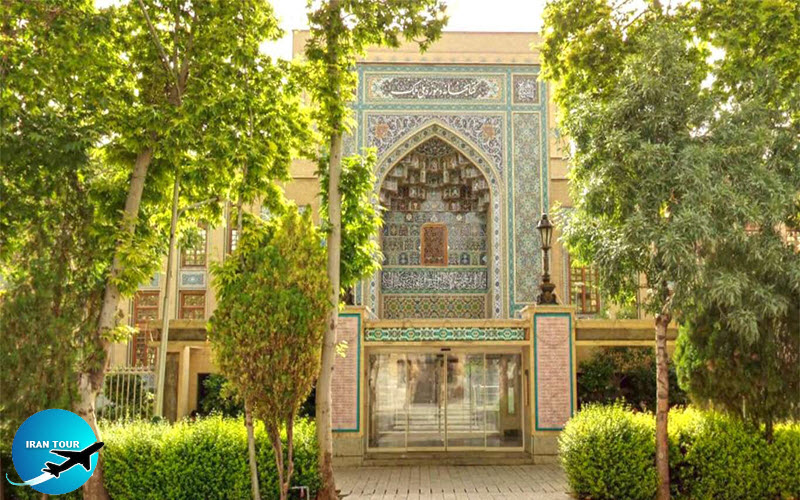 |
- Malek Museum
The Malek Museum which is a free museum is an old house of the Qajar era which belonged to Haj Hossein Agha Malek. This building extended at the Pahlavi era and changed to Malek Museum. This complex is included a Qajar house, a library, and a museum. The two parts of the building incorporate architectural elements and decorations from the Qajar and Pahlavi periods, including brickwork, tilework, plasterwork, wooden decoration, stone carvings, wood carvings, metal works, and wallpapers. This collection contains beautiful and breathtaking objects like Stamp Exhibition, Permanent Coin Exhibition, Calligraphy and Painting, decorative Arts, Picture, 19000 of different Books, Miniature, And other arts.
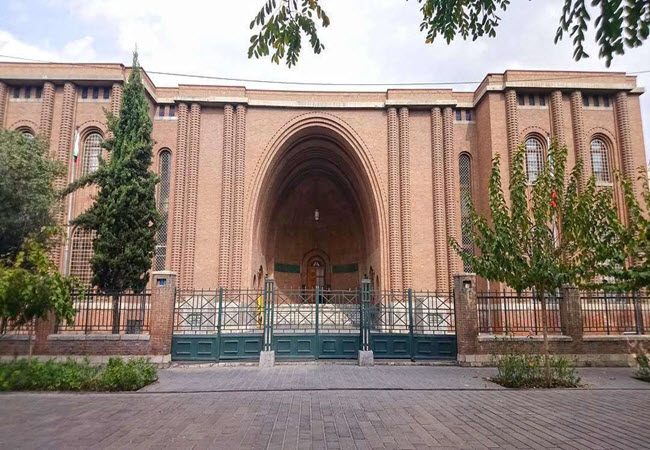 |
-Iran National Museum
This museum contains two sections of the Iran National Museum and the Islamic Museum, although is not free but don't miss.
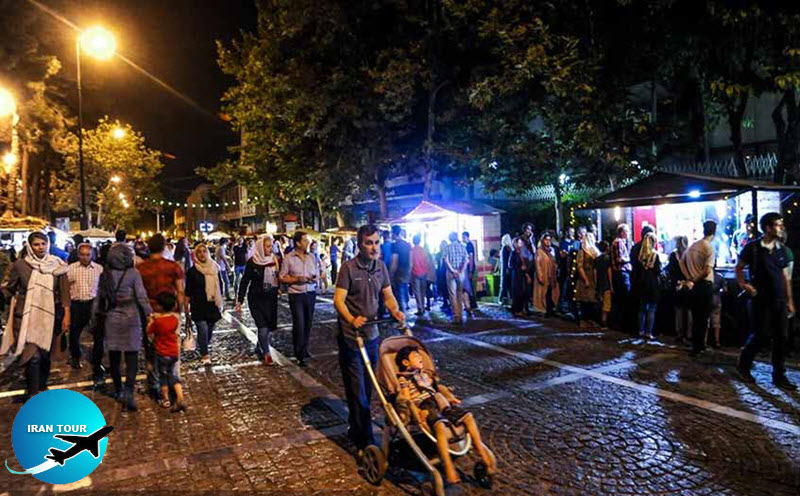 |
-30 Tir street
This street and its monuments are a collection that requires a full-day tour, including the Iran National Museum (Islamic & Pre-Islamic)- the Christian Church - the Jewish Synagogue - the Zoroastrian Fire Temple, and the Mosque. This street is famous for the crossroad of religions. The Glassware & Ceramic Museum is also one of the most beautiful buildings that not only have beautiful and spectacular objects but also have valuable architectural aspects.
30 Tir street also invites you for a nightly party with the best street food.
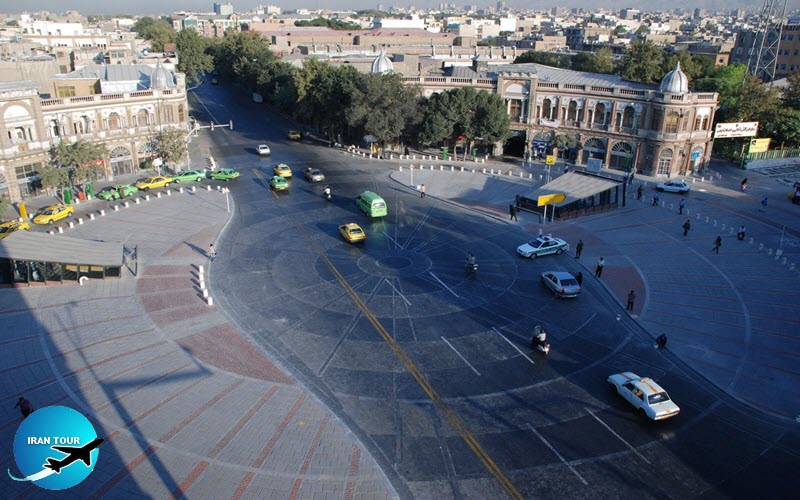 |
-Hasan Abad Square
It also spelled Hasanabad, an ancient and historic area that developed in the Qajar era and after the opening and development of Toop Khane Square. Hasanabad Square was built by order of Mirza Yusef Ashtiani, one of the ministers of Naser ed-Din Shah. The surrounding buildings of Hasanabad Square were designed by Iranian-Armenian architect Qelich Baqelian, with structural engineering provided by fellow Iranian-Armenian architect Leon Tadosian. The square is surrounded by four identical buildings, each covering a corner of the square. After the 1979 revolution, the Iranian Cultural Heritage Organization made efforts to reconstruct the damaged parts of the buildings. As part of the reconstruction, two additional modern blue glassy floors belonging to the National Bank of Iran were added to the old structure of one of the four buildings.
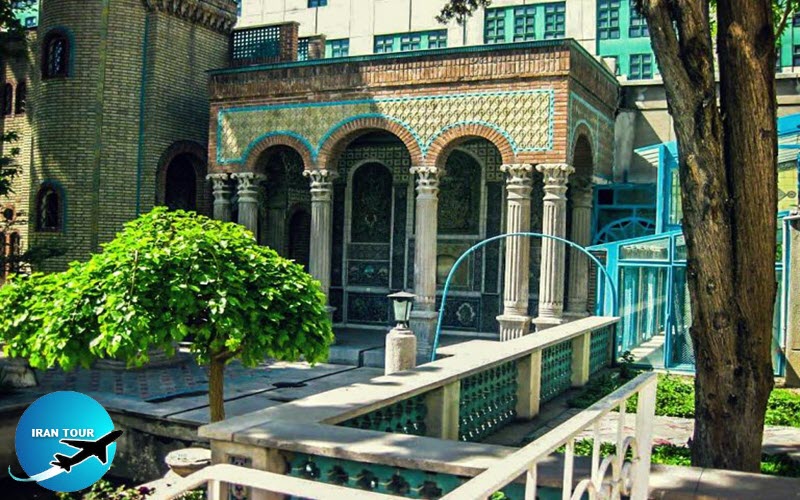 |
-Moghaddam Museum
One of Tehran's must-see attractions is the Moghaddam Museum. This historic mansion from the Qajar period is very precious for its unique architecture. It is located in Imam Khomeini Street, near Hasan Abad Square. If you plan to use the Tehran metro to get there, Hasan Abad station is the closest. The atmosphere and the spirit of the museum are a total paradox compared to the district in which it is located. Most of the surroundings and surrounding buildings have typical architecture and are relatively new. But as soon as you reach the entrance to the museum, everything changes. First impressions are a fresh atmosphere, beautiful ponds, beautiful geranium, interior design, and the use of crisp Persian colors such as turquoise, blue and purple.
- Details
- Category: Tehran Tourism